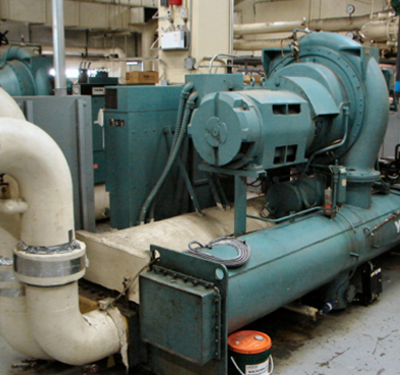

Choose the Right Replacement Boiler
Posted in Engineering
Your boiler needs to be replaced. It’s old and inefficient and your natural gas costs are sky rocketing. What type of replacement boilers should you look at?
There are condensing, non condensing, steel or copper water tube or fire tube, to name a few, and efficiencies range from 75% to 96%. You will need to decide if the boiler should be direct vented, closed combustion, modulating, or variable flow.
Before you purchase a new boiler, the project should start with a qualified engineering company. They will perform load calculations to correctly size the replacement boilers, which will probably be smaller than your existing unit.
Why would they consider specifying a boiler with less input heat? The reason is fairly simple. When your boiler was originally selected, calculations of the heat loss were not exact; they were performed by hand, with long formulas and assumptions being made by the engineer, who then took the information and reviewed a manufacturer’s catalog and picked the next larger size.
In the past, engineers wanted to make sure that the boiler was large enough to heat the building and knew their calculations were less accurate than they’d like. To compensate for the then typical inefficiencies of boilers, a 50% to 75% safety factor was added. Oversized boilers short cycle, leading to lessthanideal comfort, poor combustion efficiency, higher maintenance costs, and in more extreme cases, shortened boiler life. Right sizing just makes sense.
Programs are available today to allow engineers to completely analyze your building. And things have changed in your building since it was built—the roof insulation, new windows, high efficiency air handling units, building automation controls, and higher efficiency lighting may have been added. The engineer will evaluate all of the building’s heat losses and internal heat gains. Changes in outside air requirements due to code changes will also affect the selection of the boiler.
New condensing boilers can handle colder return water, variable pumping, outdoor reset and variable power burner operations. These
improvements have been engineered since you installed the last boiler. Take advantage of the new technologies and manufacturing techniques that your consulting engineer will investigate.
True Story
At the turn of the century, the Spanish influenza killed over 40 million people. After scientists found that the flu was airborne, people kept the windows of their homes and buildings open, even in the middle of winter. So the boilers needed to be sized to heat the building even with the windows open!
When oil became more popular and less expensive than coal, the existing boiler was converted with an oil burner. But the oil dealer did not want call backs and usually picked the larger burner. There are no easy conversions from the amount of heat from a coal fire to an oil fire, so an additional safety factor was added.
In the early 1970s, when the U.S.A. experienced the oil embargo, natural gas became the choice for heating. Converting the oil boiler to a natural gas boiler was easy, but the gas burners did not match exactly to the oil burner, so the contractors picked the next larger size.
Boilers that are ready for replacement are usually significantly oversized. Modern engineering calculations and updated technologies can provide you with a properly sized boiler and reduce your operating costs.

 Previous STORY
Previous STORY